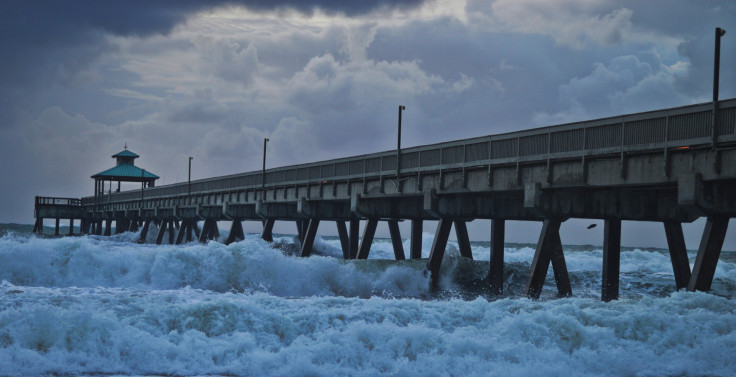
Florida had not finished to address the impact of Hurricane Helene before Milton made landfall on Wednesday night. It is a one-two punch that is severely impacting the state, leading many to reminisce of the 2004 hurricane season, when Florida was battered by four storms in just six weeks. Officially known as the "Sunshine State," Florida earned the moniker "Plywood State" during the period as residents kept boarding up their homes.
The 2004 season was marked by an active Atlantic hurricane forecast, with the National Oceanic and Atmospheric Administration (NOAA) predicting 15 named storms, nine of which indeed became hurricanes. Charley, Frances, Ivan, and Jeanne made direct impacts on Florida, each posing threats to residents and visitors in hurricane-prone areas. Notably, two of the four storms, Frances and Jeanne, made landfall just two miles apart within a span of three weeks.
The 2004 hurricane season marked a historical milestone: it was the first time since the 1850s that Florida experienced four hurricanes in one season. In the aftermath, NOAA reported that nearly every part of Florida felt the impact of these storms, leading to a collective sense of vulnerability.
Overall, nine tropical systems impacted the U.S. that year, resulting in estimated damages exceeding $51 billion, marking the most expensive hurricane season in U.S. history and surpassing the previous record of $35 billion set in 1992, the year Hurricane Andrew struck South Florida.
Hurricane Charley
The hurricane season kicked off with Hurricane Charley, which made landfall on August 13 as a Category 4 storm. A hurricane warning was issued for Florida's west coast, but many residents focused on the forecast center line, which initially projected a Tampa Bay impact. As Charley strengthened and veered southward, it struck Punta Gorda, about 100 miles from the predicted path, resulting in 17 fatalities and extensive damage.
Hurricane Frances
Weeks later, on September 5, Hurricane Frances made landfall on the Florida east coast as a Category 2 hurricane. The storm's maximum sustained winds peaked at 145 mph, achieving Category 4 on the Saffir-Simpson Hurricane Scale. Its vast center, measuring 55 to 80 miles wide, brought a false sense of calm as it passed overhead. However, as the storm moved inland, it spawned 23 tornadoes across the state and caused significant destruction while crossing the peninsula and impacting the Florida Panhandle.
Hurricane Ivan
On the same day Frances made landfall, Hurricane Ivan formed over the tropical Atlantic. Ivan struck the Gulf Coast on September 16 as a Category 3 hurricane, inflicting severe damage near Gulf Shores, Alabama. The storm caused substantial erosion of the Interstate 10 bridge system across Pensacola Bay, with storm surge effects reaching Tampa Bay, 500 miles away. Ivan caused over $13 billion in damage, significantly impacting the Florida Panhandle and North Florida.
Hurricane Jeanne
Just as recovery efforts were underway from Frances, Florida faced Hurricane Jeanne, which struck on September 26 as a Category 3 storm. Jeanne's 55-mile-wide eye crossed the same region that Frances had affected weeks earlier, bringing heavy rainfall and widespread flooding, with some areas receiving over seven inches of rain.
This week, Hurricane Milton has left its own trail of destruction in Florida, impacting millions of residents. Deaths have already been reported. Just two weeks after Hurricane Helene caused significant damage across the southeastern United States, Milton rapidly intensified, reaching peak strength similar to some of the most destructive Atlantic hurricanes on record. Within just 24 hours, it grew from a tropical storm to a Category 5 hurricane—the highest level on the Saffir-Simpson Hurricane Wind Scale, which measures storms by sustained wind speeds.
At least four people have died as a result of the impact from Hurricane Milton in Florida between Wednesday night and Thursday morning. The first fatalities were reported in the St. Lucia County, more specifically in the Spanish Lakes Country Club, and resulted from tornadoes impacting the area. Search and rescue operations are underway to check for more casualties as deputies and firefighters go through rubble.
"Several houses and structures across the county, including the city of Port St. Lucia and non-incorporated areas suffered significant damage," county authorities said. Over 160 tornado warnings were issued for south Florida before Milton made landfall. One twister leveled a large St. Lucie Sheriff's Department facility.
© 2025 Latin Times. All rights reserved. Do not reproduce without permission.


